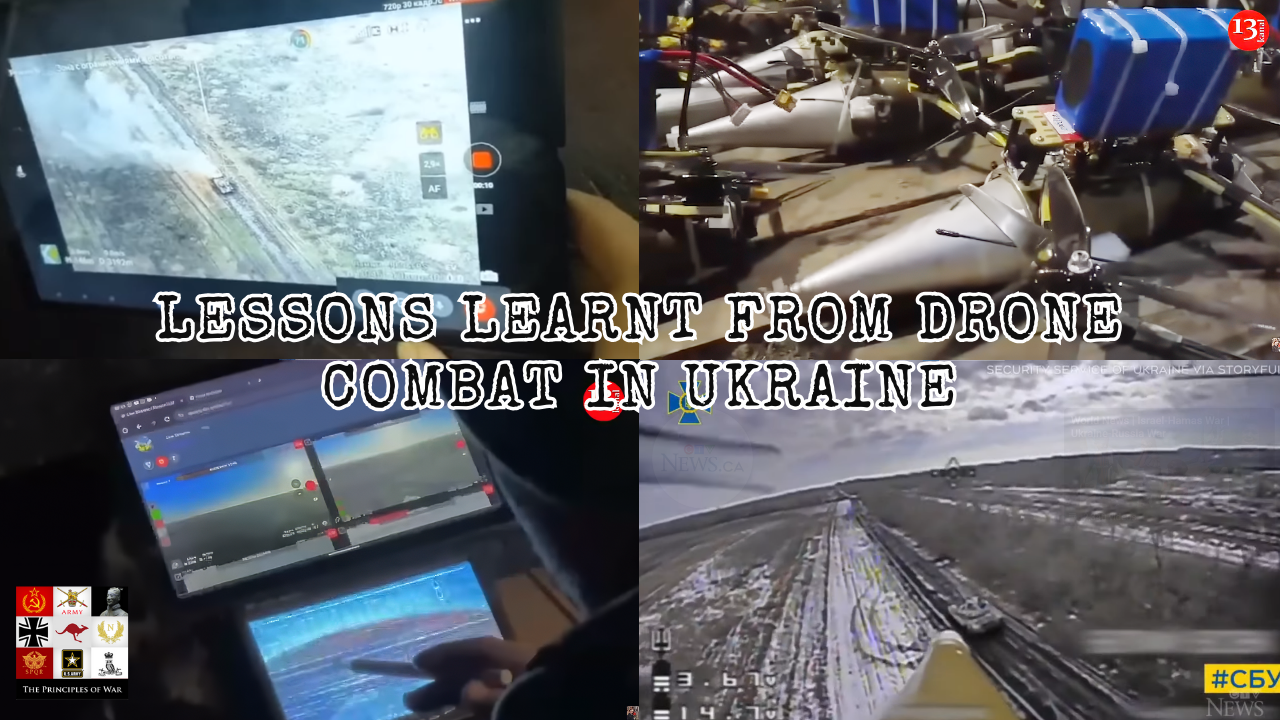Lessons from Ukraine: How UAS Warfare is changing the character of war
This episode features Sam Bendett, an advisor at CNA and an expert on uncrewed robotic and autonomous military systems, along with Russian military capabilities. He was written extensively on the war in Ukraine and in particular the drone combat occurring there. We look at how the generation of the combined arms effect is changing and what the lessons learnt are from the battlefields of Ukraine.
In the rapidly evolving war in Ukraine, unmanned aerial vehicles (UAVs) have emerged as pivotal players. The conflict in Ukraine has been a proving ground for drone technology, showcasing both the potential and limitations of these systems in modern combat.
These are the show notes for the episode. Listen to the podcast for all of Sam’s great analysis.
Historical Context and Evolution
Bendett begins with the influences from the Nagorno-Karabakh conflict, where UAVs played a significant role in the Azerbaijani military’s success, in particular the Turkish Bayraktar TB-2. This conflict underscored the importance of loitering munitions and air defence systems. The lessons from Nagorno-Karabakh were clear: stationary forces are vulnerable, and effective counter-UAV measures are essential. These insights were critical for both Ukrainian and Russian forces as they prepared for and engaged in the current conflict.
The Ukrainian and Russian Approaches and the Combined Arms effect
Ukraine and Russia have adopted different strategies in integrating UAVs into their military operations. Ukrainian UAV units are well-integrated within their battalion structures, benefiting from modern communication systems and a cohesive information network. This integration allows for real-time battlefield awareness and timely targeting of Russian forces. In contrast, the Russian approach is less standardized, with UAV squads embedded in various units but lacking uniformity in training and equipment.
At the tactical level, both sides have employed short-range drones for reconnaissance and targeting. However, Russia has also utilized longer-range loitering munitions like the Lancet and KUB-BLA drones with notable success. Both Ukraine and Russia have developed long-range platforms, some capable of striking over 1,500 kilometers.
Artillery and UAV Synergy
The relationship between UAVs and artillery has been a crucial aspect of the conflict. During periods of artillery shortages, Ukrainian forces have effectively used short-range drones as artillery surrogates. These drones provide critical intelligence, surveillance, and reconnaissance (ISR) capabilities, enabling precise targeting of Russian positions. The integration of UAVs with artillery systems has enhanced the effectiveness of Ukrainian strikes, despite the challenges posed by ammunition shortages.
Maneuver and Counter-UAV Measures
The omnipresence of drones has significantly altered the dynamics of battlefield manoeuver. The ability of UAVs to track and target both vehicles and individual soldiers has made movement highly dangerous. Both sides have developed counter-UAV measures, including electronic warfare (EW) systems, physical defences like slat armor, and tactical adjustments. However, the effectiveness of these measures varies, with some units better equipped and trained than others.
Bendett notes that the electronic warfare space is highly dynamic, with both sides constantly adapting to counter each other’s advances. The use of commercial technologies and volunteer-provided equipment has led to a mix of capabilities across the front lines. This variability underscores the importance of standardized approaches and continued innovation in counter-UAV tactics.
UAS Air Superiority and Intelligence Exploitation
As drone-on-drone combat becomes more common, both sides are developing tactics reminiscent of early air combat. The targeting of enemy drones, whether through direct attacks or electronic countermeasures, is becoming a critical aspect of the conflict. The exploitation of captured drones for intelligence purposes is also a growing trend, with both Ukrainian and Russian forces disassembling and studying downed UAVs to glean insights into enemy capabilities.
Production and Supply Chain Dynamics
The scale of UAV production is a contentious issue. Reports suggest that Ukraine can produce up to 50,000 FPV drones per month, while Russia’s capacity could reach 300,000. However, the reliance on Chinese components remains a significant factor for both sides. Efforts to develop domestic production capabilities are ongoing but have not yet eliminated dependence on imported parts. Many of the drones are First Person View drones (FPV) and there is likely to be a very high failure rate with these drones, however, for the low cost of development, many losses can be tolerated when targeting high-value targets.
Lessons Learnt for Drone Combat.
The conflict in Ukraine has highlighted the transformative impact of UAVs on modern warfare. Drones have become integral to ISR, targeting, and even direct combat roles. The lessons learned from this conflict will shape future military strategies and technologies. As Bendett emphasizes, the continued evolution of UAV tactics and countermeasures will be critical in maintaining battlefield effectiveness. The experiences from Ukraine serve as a stark reminder of the importance of adaptability and innovation in the face of rapidly technology and tactics.
To further emphasise the lessons – ABC Radio conducted an interview with Dr John Holcomb, a trauma surgeon from ASPEN Medical who works to train surgeons in Ukraine. He discussed how casualties wounded in the morning may not be evacuated for 12 hours as there is much less movement occurring on the battlefield because of the danger of drones.








2 comments
[…] (This post is republished from The Principles of War.) […]
The full podcast can be found at – https://theprinciplesofwar.com/podcast/117-lessons-learnt-from-drone-combat-in-ukraine/
[…] post builds on our podcast with Sam Bendett looking at UAS Innovation and TTP evolution in the Ukraine war. It is clear that UAS combat is developing very quickly given the advances since the […]